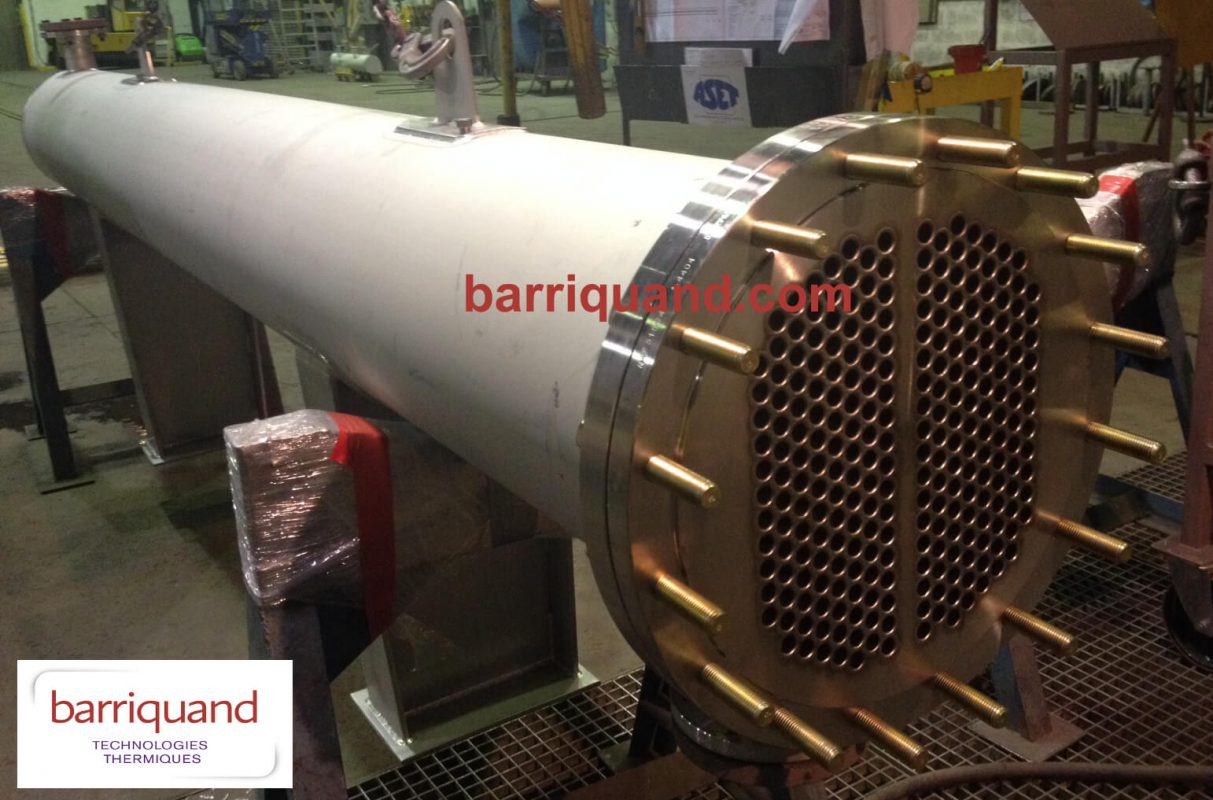[Case study]: a shell&tube to cool down detergents
Upon request from a manufacturer of household products, Barriquand designed and custom-built a Shell & tube (U-type) exchanger to cool down a viscous fluid with alcohol content.
Case study: a shell&tube to cool down detergents
Upon request from a manufacturer of household products, Barriquand designed and custom-built a Shell & tube (U-type) exchanger to cool down a viscous fluid with alcohol content.
The batch processing method for cooling purposes
This client is specialised in the production of surfactants such as laundry detergents whereby one stage of the process requires to cool down ethoxylated fatty alcohol using the batch processing method.
This consists in cooling a pre-defined volume within a given period of time and includes fluid recirculation inside the exchanger until the desired temperature is achieved. This not only allows to reduce the footprint of the equipment (heat exchanger, piping, pumps, etc…) and hence its cost but also to achieve energy savings (given power consumption is linear over a longer period of time).
In this case, the process required to cool 22.5 tons of a viscous fluid from 87°C to 60°C in 45 minutes.
The U-type Shell&tube exchanger
Here the challenge consisted in optimising heat transfer subject to cyclical operations as well as varying temperatures and temperature differences.
Since every single tube can expand freely within the shell, it is fully resistant to thermal stress factors.
It is the best solution for our client whose operations are not continuous throughout the year and involve high and variable temperatures.
Keep fluid retention to a minimum

In order to minimize fluid retention within this 4m-long S&T built in SS 316L, we considered a number of factors:
The position of the tubes in the lower part of the shell;
The design of the baffles;
The position of the inlet pipe on the top side of the shell to allow for efficient degassing throughout the filling process;
The position of the outlet pipe on the bottom side of the shell, together with a built-in slope inside the shell down to the pipe, will allow the remaining fluid to drain away by gravity prior to the drying process with N2. The pros of the Made in France
2main factors drove this client to opt for Barriquand’s offer:
Our expertise and experience in the field of heat exchange and;
The location of our manufacturing site in France (ASET at Saint-Priest, near Lyon) which was associated with product quality and reliability.

